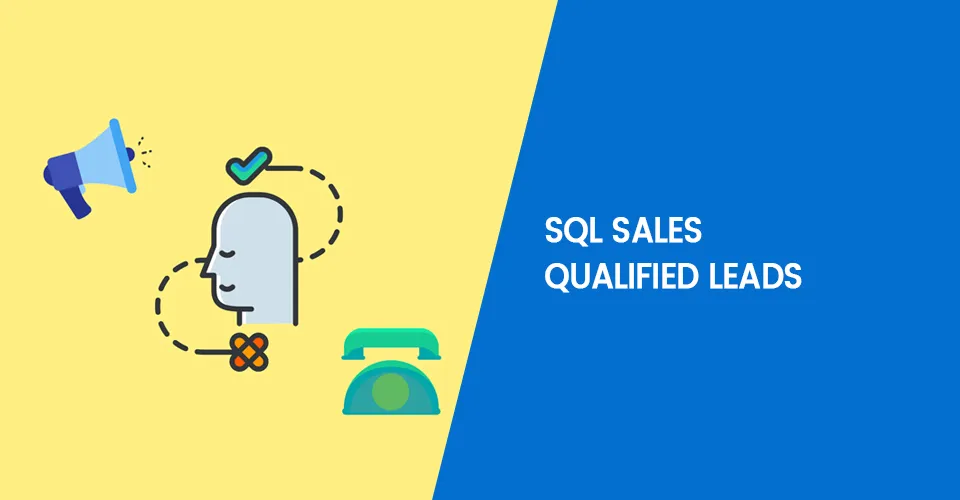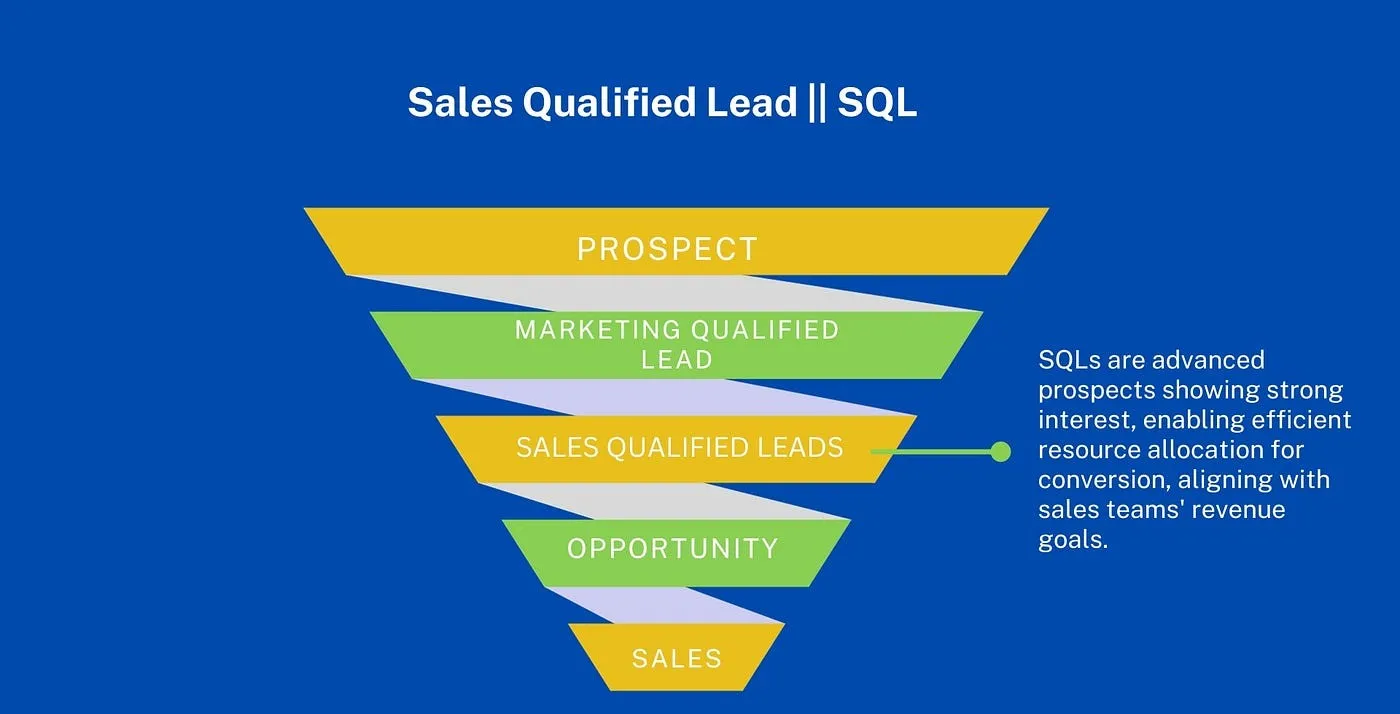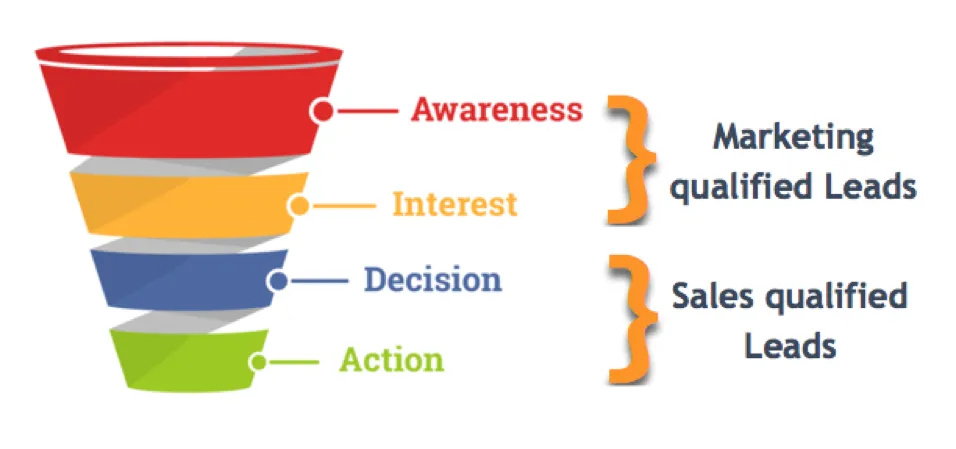What is a Sales Qualified Lead (SQL)?

A Sales Qualified Lead (SQL) is a prospect that has been rigorously evaluated and is considered ready for the next stage of the sales process by marketing and sales teams.
This classification is the result of a thorough assessment by both the sales and marketing teams, ensuring that the lead is not only interested but also a good fit for the company's offerings.
Characteristics of SQLs:
- Engagement Level: They often show a high level of engagement, such as multiple visits to the company's website or spending time on specific pages like the pricing page. According to HubSpot, leads that visit pricing pages are 25% more likely to convert into sales.
- Lead Scoring: SQLs typically score high on lead scoring systems, which evaluate factors like company size, job title, and direct interactions with marketing efforts (e.g., downloading a whitepaper or attending a webinar).

Why SQLs Are Important for Your Sales Process

Sales Qualified Leads (SQLs) are crucial for the success of your sales process due to several compelling reasons. Their importance can be dissected into strategic benefits that directly impact the effectiveness and efficiency of your sales efforts.
Focused Resources
- High Conversion Potential: SQLs are more likely to convert into paying customers compared to leads at earlier stages. Concentrating on SQLs maximizes the impact of your sales efforts, boosting your overall conversion rates.
- Efficient Use of Sales Team's Time: By focusing on SQLs, your sales teams spend their time on the most promising prospects, which can lead to a more efficient sales cycle.
Improved ROI
- Targeted Marketing Spend: Investing in generating and nurturing SQLs means your marketing dollars are focused on leads that are more likely to yield returns. This can significantly enhance your marketing ROI.
- Predictable Sales Funnel: With a steady flow of SQLs, your sales funnel becomes more predictable and manageable, allowing for better forecasting and resource allocation.
Improved Marketing and Sales Team Alignment
- Shared Goals and Metrics: SQLs require close cooperation between sales and marketing teams. This alignment around SQL generation and conversion fosters a unified approach to achieving shared sales targets.
- Feedback Loop: Regular feedback regarding the quality of SQLs helps marketing teams refine their strategies and targeting, improving lead quality over time.
Process of Creating a Sales Qualified Lead

The process of creating a Sales Qualified Lead (SQL) involves transitioning a lead from the initial interest stage, typically identified as a Marketing Qualified Lead (MQL), to a stage where they are considered ready for direct sales engagement.
Here’s a brief overview of how an SQL is created from an MQL:
Stage 1: Initial Lead Capture
- Lead Generation: Potential leads are generated through various marketing efforts such as content marketing, social media campaigns, SEO, and PPC advertising.
- Capture Information: Information is captured via landing pages, forms, and other lead capture mechanisms, often in exchange for content or other offerings.
Stage 2: Marketing Qualified Lead (MQL)
- Lead Scoring: Leads are scored based on predefined criteria that may include demographic information, online behavior, engagement with marketing content, and more.
- MQL Designation: Leads are classified as an marketing qualified leads when they achieve a score that indicates a higher level of interest and fit for the product or service. This score is based on engagement that suggests they are potentially a good customer but not yet vetted by sales.
Stage 3: Lead Nurturing
- Targeted Content Delivery: MQLs receive targeted content designed to nurture their interest and increase their knowledge about the product or service. This can include emails, targeted ads, webinars, and detailed guides.
- Engagement Tracking: Marketers track engagement and interaction with the nurturing content to further refine the lead’s profile and readiness.
Stage 4: Transition to Sales Qualified Lead (SQL)
- Further Qualification Criteria: Leads are assessed against more stringent criteria, including specific interests in products or services, budget availability, authority to make purchasing decisions, and readiness to engage in a buying conversation.
- Sales Review: The sales team reviews the highly scored leads to verify that they meet all the criteria to be considered an SQL. This typically involves direct interaction or deeper data analysis.
Stage 5: SQL Designation
- Confirmation by Sales: Once a lead is confirmed by the sales team as meeting all the SQL criteria, they are officially designated as an SQL.
- Ready for Active Selling: SQLs are then actively engaged by the sales team with personalized pitches, demonstrations, and offers aimed at closing the sale.
How to Identify SQLs

Identifying Sales Qualified Leads (SQLs) involves a systematic process that ensures your sales team is engaging with the most promising leads. Here’s a step-by-step guide to accurately pinpoint SQLs:
Step 1: Define SQL Criteria
- Collaborate with Sales and Marketing Teams: Establish a joint meeting between these teams to define what makes a lead "sales qualified" in your context.
- Utilize the BANT Framework: This involves assessing the Budget, Authority, Need, and Timeline of a lead. Ensure the criteria are specific to your products or services.
Step 2: Implement a Lead Scoring System
- Set Up Scoring Parameters: Assign points to various actions and demographic factors that align with strong buyer intent, such as industry, job title, or interactions with key content.
- Automate Scoring: Use marketing automation tools to apply scores automatically as leads engage with your website and content.
Step 3: Lead Nurturing and Engagement Monitoring
- Develop Targeted Content: Create content that addresses common questions and pain points at different stages of the buyer’s journey.
- Monitor Engagement: Track how leads interact with your content, focusing on high-engagement behaviors like downloading whitepapers or attending webinars.
Step 4: Use CRM and Marketing Automation Tools
- Integrate CRM Systems: Ensure all lead data is captured and easily accessible in your CRM system, allowing for seamless tracking of lead progress.
- Set Behavioral Triggers: Configure your marketing automation system to notify sales when a lead's behavior indicates a high level of interest or a readiness to buy.
Step 5: Regular Review and Feedback
- Sales Feedback: Regularly collect feedback from the sales team on the quality of SQLs to identify any gaps in the scoring or qualification process.
- Refine Processes: Continuously improve the criteria and scoring based on sales outcomes and feedback, adapting to changes in buyer behavior or market conditions.
Step 6: Final Qualification by Sales Team
- Direct Interaction: Have sales representatives engage directly with high-scoring leads to assess their readiness and interest personally.
- Confirm SQL Status: The sales team should confirm whether the lead is indeed qualified to be pursued as an SQL based on direct interactions and additional insights.
7 Strategies for Measuring and Qualifying SQLs

To optimize the effectiveness of your sales process through well-qualified Sales Qualified Leads (SQLs), implementing strategic measures is crucial. Here are some effective strategies to ensure your SQLs are accurately measured and qualified:
1. Refine Lead Scoring Models
Continuously refine your lead scoring models based on data gathered from past interactions and conversions. Analyze which behaviors and characteristics most often lead to sales, and adjust scores accordingly.
Differentiate scoring criteria based on customer segments such as industry, company size, or job role to better predict which leads might become SQLs.
2. Enhance Alignment Between Sales and Marketing
Hold regular meetings between sales and marketing teams to discuss the quality of leads and potential adjustments in the marketing qualified lead (MQL) to SQL conversion process.
Clearly define what constitutes an MQL and an SQL, ensuring both teams agree and work towards the same goals.
3. Leverage Marketing Automation and CRM Systems
Use marketing automation tools integrated with your CRM system to track lead behaviors across all touchpoints and automate the movement of leads from MQLs to SQLs based on scoring thresholds.
Implement tracking of key lead behaviors, such as email engagement, content downloads, and website interactions, to automatically update lead scores.
4. Conduct Regular Lead Reviews
Regularly review the quality of SQLs with the sales team to ensure they meet the established criteria. This can involve sample checks or regular audit meetings.
Create a structured feedback mechanism for the sales team to report back on the lead quality and the outcome of sales efforts, which helps in further refining the qualification process.
5. Utilize Advanced Analytics
Apply predictive analytics to determine the likelihood of leads becoming customers based on historical data and behavior patterns.
Regularly analyze conversion rates and other key performance indicators to understand the effectiveness of different qualification stages and marketing channels.
6. Continuous Training and Development
Ensure your sales team is well-trained on how to engage with SQLs effectively, including understanding when a lead is genuinely ready to move forward in the sales process.
Keep your marketing team updated on the latest trends and tools in lead nurturing and scoring to maintain a high level of lead qualification.
7. Optimize Lead Nurturing Strategies
Deploy targeted, personalized content that addresses the specific needs and pain points of leads at different stages of the buying journey.
Utilize multiple channels such as email, social media, webinars, and direct mail to nurture leads in a way that aligns with their preferences and behaviors.
Best Practices for Managing SQLs

Effectively managing Sales Qualified Leads (SQLs) is pivotal for converting prospective customers into paying clients and enhancing the overall health of your sales pipeline. Here are best practices to ensure you're maximizing the potential of your SQLs:
1. Prioritize Communication Between Sales and Marketing Teams
Ensure the marketing team and sales teams are aligned on what defines an SQL and the objectives for converting them to sales accepted leads. Regular alignment meetings can help maintain this focus.
2. Focus on Lead Quality Over Quantity
Qualify Leads Rigorously, Implement stringent qualification criteria to ensure that only high-potential leads are passed to sales. This helps in maintaining a high quality of leads in the sales pipeline, increasing efficiency and effectiveness.
3. Develop a Structured Follow-Up Process
Establish a standardized follow-up process to quickly engage SQLs at the sales qualified lead stage. This includes setting specific time frames for initial contact and follow-up communications.
4. Use Data to Refine Lead Management
Utilize CRM and marketing automation tools to gather data on lead behavior and progression. Analyze this data to refine your approach to managing SQLs and to increase sales qualified leads through targeted strategies.
5. Personalize Communication
Tailor communications and proposals to meet the specific needs and interests of each prospective customer. Personalized interactions are more likely to convert SQLs into finalized sales.
6. Continuous Training for Sales Teams
Regularly train sales teams on the latest sales techniques and information about products or services. This training helps them better engage with SQLs and effectively guide them through the sales process.
7. Incentivize and Monitor Performance
Implement incentive programs to motivate your sales teams to actively pursue and convert SQLs. Monitor their performance to identify areas for improvement and to celebrate successes.
8. Foster a Feedback Loop
Encourage a culture of feedback where sales teams can provide insights back to the marketing team about the lead quality. This feedback is crucial for ongoing efforts to generate sales qualified leads and to refine marketing strategies.
Key Metrics to Track When a Lead is a Sales Qualified Lead
Concluding Thoughts
In conclusion, Sales Qualified Leads (SQLs) are pivotal for optimizing sales strategy. They streamline the sales process by focusing efforts on leads most likely to convert, thus enhancing efficiency. Effective management of SQLs involves a robust collaboration between sales and marketing teams, ensuring alignment with business objectives and higher conversion rates.
Moreover, a data-driven approach is essential for continually refining strategies based on lead behavior and sales outcomes, enabling businesses to adapt to changing market dynamics and improve their overall sales and marketing ROI. This strategic focus on SQLs is crucial for any business aiming to enhance its performance and competitiveness in the market.
Further Reading
To further expand your expertise on Sales Qualified Leads (SQLs) and elevate your sales strategies, we recommend the following articles available on our blog. Each resource provides detailed insights and actionable tips to help you optimize your lead generation and sales conversion processes:
- How to Market with Email: Discover effective email marketing strategies that can enhance your lead nurturing efforts and increase the quality of your Sales Qualified Leads. Explore here.
- Best Regards vs Kind Regards: Understand the nuances of professional email sign-offs and how they can impact your communication with potential SQLs. Read more.
- Understanding MQLs: Gain a comprehensive understanding of Marketing Qualified Leads (MQLs), their role in the sales funnel, and how they differ from SQLs. Learn more.
- MQL to SQL Conversion Rates: Delve into strategies to improve your MQL to SQL conversion rates, crucial for optimizing your sales process and increasing overall efficiency. Find out how.
- Web Design for Cold Emails: Learn how effective web design can enhance your cold email campaigns, making them more appealing to potential SQLs. Check it out.
These articles are crafted to provide you with advanced knowledge and tools to boost your sales team's performance and effectively manage your sales pipeline. Integrating these principles into your sales strategy can lead to improved lead qualification and more successful conversions





.webp)


